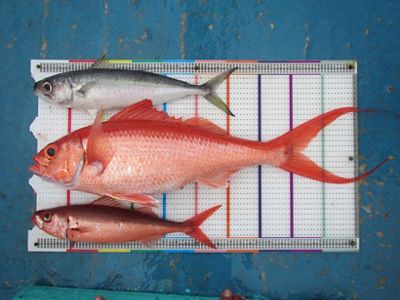The challenge of fisheries management is the lack of information on fishery stocks
Frequently, we lack information about the type, location, and quantity of fish caught. Yayasan Konservasi Alam Nusantara (YKAN) uses its Crew Operated Data System method to address this information gap.
YKAN has designed a fisheries data collection method known as Crew Operated Data Recording Systems (CODRS) that it deploys through crews on fishing boats. The first step in the CODRS method sees fishermen placing fish on a measuring board and photographing them. Next, field officers examine the photos to determine the species of fish and its size. After that, another officer reviews and verifies the data. Finally, the information is stored in a database.
CODRS can document catches of snapper and grouper, as well as bycatch such as sharks and stingrays. The 2019 survey identified 1,742 individuals, classifying 59% as near-threatened, 9% as threatened, 8% as vulnerable, and 3% as critically endangered, according to the IUCN Red List.
Global Positioning System (GPS) technology also plays a valuable role in recording fishery data, offering a reliable method to track fishing vessels and accurately determine the locations where fish are caught.
Quote
YKAN’s Crew Operated Data Recording System addresses the challenge of insufficient information on fish stocks.








